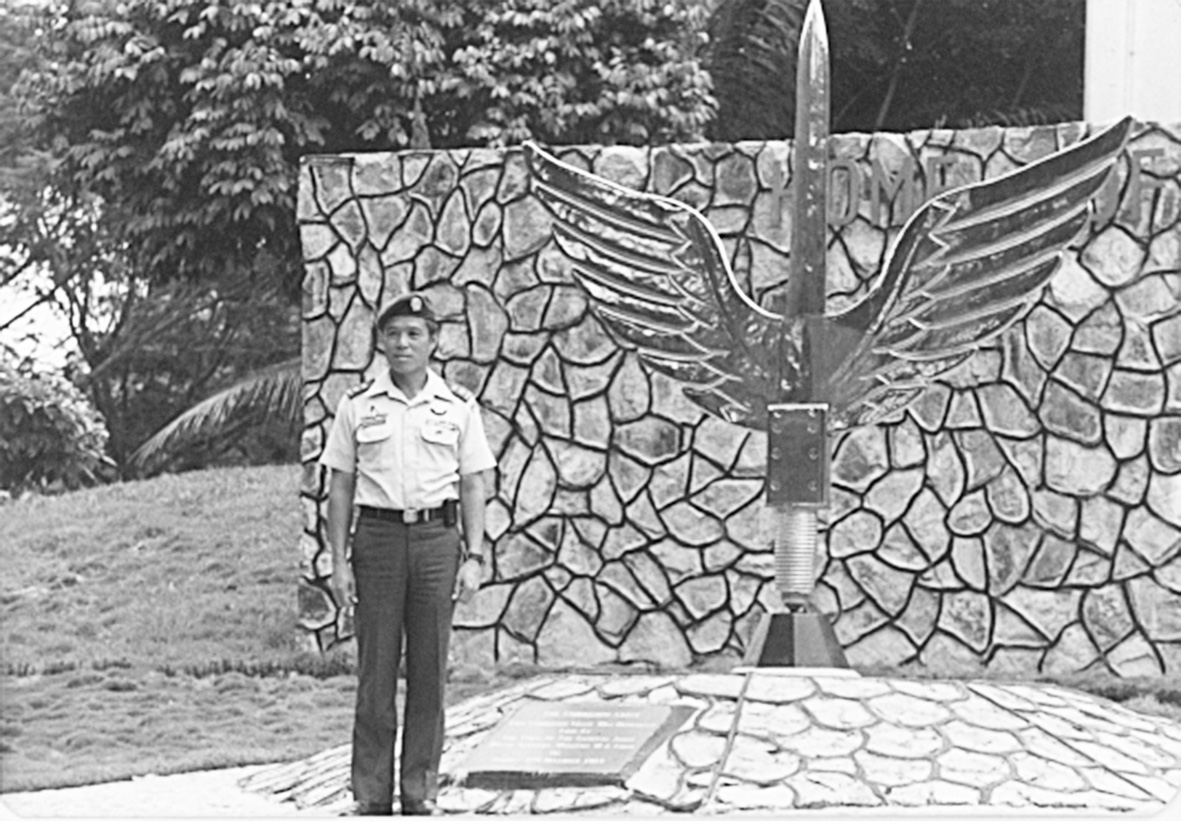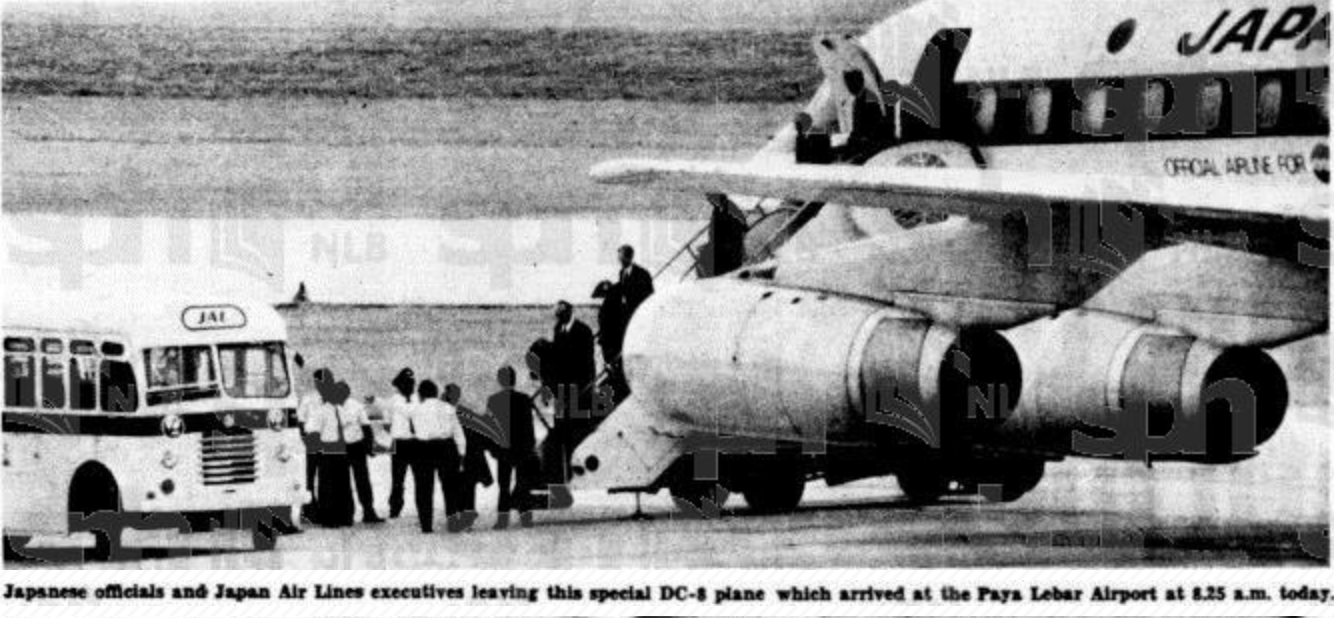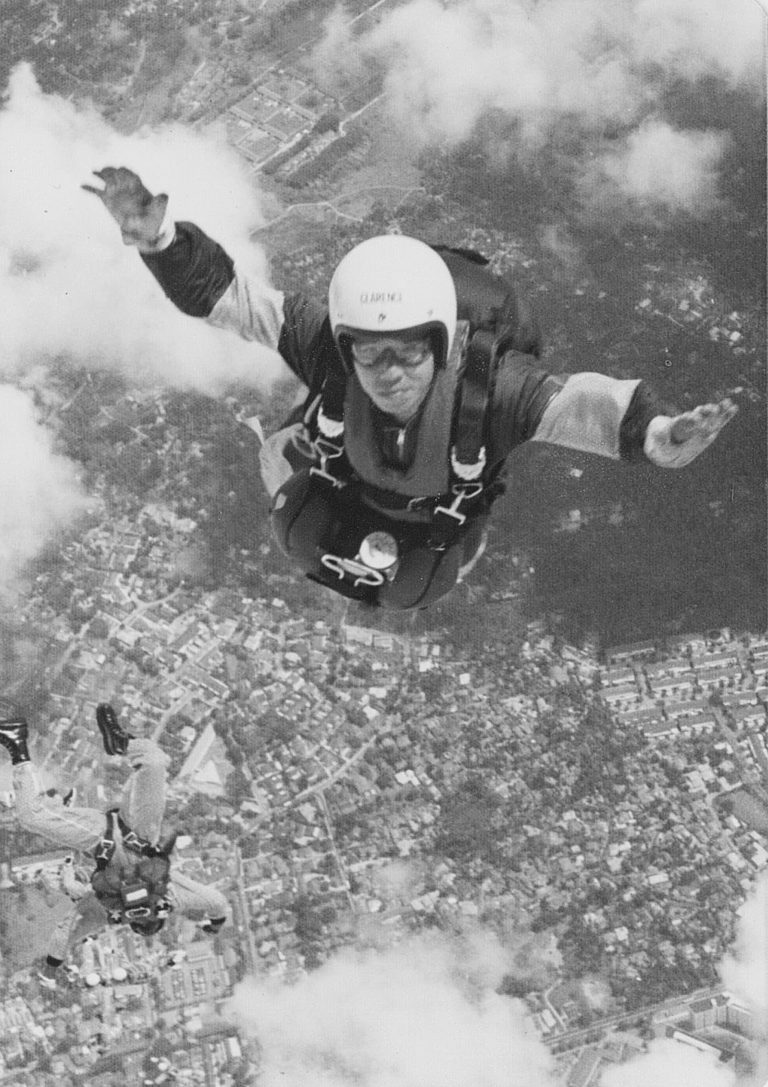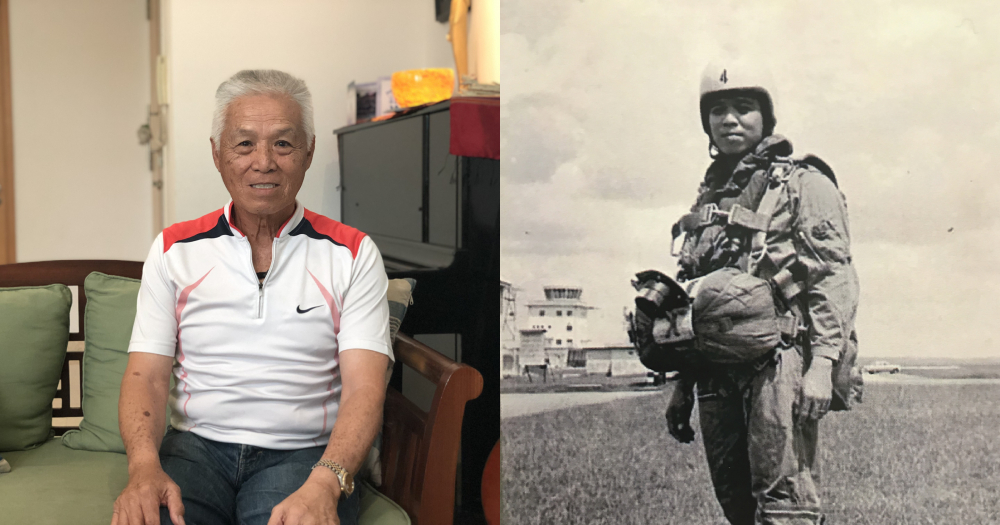Clarence Tan is by all definitions of the word a Singaporean hero.
After all, we're talking about someone who, among other exploits,
- was in the first batch of soldiers to be part of Singapore's post-independent army,
- fought in the Konfrontasi,
- led the escort of the Laju hijackers,
- kept watch over Vietnamese refugees during Operation Thunderstorm, and
- was even used as the poster boy for army recruitment in the 1960's.
Born in the final years of the Japanese Occupation and raised in the last days of British colonialism, Tan was at first a member of the Singapore Volunteer Corps before joining the military full-time to become a regular officer in 1963.
But before we can attribute his decision to join the army to any sense of patriotism, the now-78-year-old is quick to tell Mothership that he signed on simply because he loved the outdoors.
It was just a nice coincidence that he was really, really good at his job too.
Starting the commandos
By 1969, a good four years into independence, Tan — having now attained the rank of Major — was tasked with establishing the Singapore Armed Forces’ (SAF) elite Commando unit.
At the time, Tan was considered the most qualified solider for the job, having been through U.S. Ranger and airborne training, as well as having spent a significant time training with Malaysia's commando equivalents.
Recalling the initial worries he had when starting the unit, Tan said:
“At that point of time, it was [stressful]. Because you got to start the unit from the very beginning and how to get these people? What sort of people do you need? And it’s not easy to recruit soldiers to join me.”
Other units had already been established and for Tan, their recruitment efforts must have seemed far more impressive to interested soldiers.
“See like the armour [unit] they can show them the tanks, and whatever they have. The artillery, the big guns. I got nothing.
The only thing that I can tell them is that they join me to have an adventurous career.”
Tan can’t help but allow the corner of his mouth to curl up in a wily smile as he recalls his pitch to that first batch of recruits.
 Tan with his commando stiletto knife. Stilettos are presented to every commando who finishes their training. Tan's golden stiletto was presented to him when he retired from the SAF. Photo by Andrew Koay
Tan with his commando stiletto knife. Stilettos are presented to every commando who finishes their training. Tan's golden stiletto was presented to him when he retired from the SAF. Photo by Andrew Koay
If memory serves him right, he qualifies, Tan saw 10 officers and about 30 soldiers from other ranks joined up after that first recruitment drive — forming the first-ever batch of Singapore commandos.
“As I said, these are the people that — I don’t know why they want to join in — they just have an adventurous spirit.”
Best in the SAF
With that, Tan and his rag-tag group of commando recruits set about earning the unit a reputation for producing the best soldiers in the SAF.
“Whatever was given to us, we proved that we could do better than [the rest]. What makes us outstanding — I put it as we want to show ourselves. In terms of sports we excel in quite a number, beating every unit.”
However, physical fitness was not the only attribute that good soldiers needed — as was pointed out to Tan by a senior officer.
That year, the unit had just taken part in the SAF’s inter-unit shooting competition. It was the first time they were competing and they did not do well.
“One of the senior officers, he was sort of telling me, ‘you people can only run and do things, but cannot shoot. It’s no use’. And I proved it to them the next year. We trained really hard and we swept the board.
So that’s where commandos made a name for ourselves. By excelling in sporting events, military events.”
From there, interest in the unit grew. In what Tan describes as “drips and drabs”, more and more soldiers started to sign up to train under him and his commandos.
 Photo from Always a Commando, courtesy of the author Thomas Squire and family.
Photo from Always a Commando, courtesy of the author Thomas Squire and family.
And it really has become best in the SAF, by the way — the Commandos have clinched the "Best Combat Unit" award in the past 15 consecutive years, and a total of 32 times since the award's inception in 1969.
Leadership by example
Despite his initial concerns in those early days about the type of men who might join the commando unit and what their levels of discipline and attitudes would be like, Tan says he never gave up on any soldier from among his ranks:
“Bad soldiers? No, it’s a question of not manhandling them. See, they look to — what I call it — leadership by example.”
It’s a philosophy that has defined Tan’s time in charge of the commandos. Even down to his eating habits.
“We all eat the same food. Officers, NCOs (non-commissioned officers), other ranks — we don’t segregate. Our cookhouse in those days was good food. I eat there every day.
I don’t go back [even though] my house was only a stone's throw from the unit — just opposite the road only. But you must set an example, I said. You must eat with the men.”
Tan’s desire to be right in the thick of it with his men was a trait that stood out to his peers and successors.
According to Thomas Squire, Tan’s son-in-law and author of Always a Commando — a book that chronicles Tan’s life and career in the military — it’s one of the things military personnel constantly bring up about Tan.
A true pioneer of the SAF, Tan’s “set an example” style of leadership was not just a fanciful maxim; it was reality.
His own physical fitness, among other SAF pioneers, was used as an early benchmark for the fitness tests soldiers had to pass. He was also one of the first two Singaporean soldiers to be sent on the U.S. army’s ranger course.
It’s no wonder Tan beams when discussing the achievements of the SAF’s commandos — he’s well and truly earned that pride.
“They are not only the best soldiers in Singapore, you know. I would say in the region — they are the best”.
The Laju Hostage Crisis
Of course, no discussion about Tan and the SAF Commandos is complete without touching on the Laju Hostage Crisis of 1974.
When four armed terrorists who had attacked an oil refinery on Pulau Bukom, hijacked a boat with five hostages, and demanded safe passage to the Middle East, Tan 's commandos were called into action.
After negotiations, it was decided that the hostages would be exchanged with a group of government officials (including then Director of Security and Intelligence in the Ministry of Defence S. R. Nathan) to guarantee safe passage for the hijackers to Kuwait.
 The plane used to transport Tan and his commandos, the Singaporean 'guarantors', and the Laju hijackers. Photo from New Nation article dated February 7, 1974/ NewspaperSG
The plane used to transport Tan and his commandos, the Singaporean 'guarantors', and the Laju hijackers. Photo from New Nation article dated February 7, 1974/ NewspaperSG
Along with three other commandos, Tan was tasked with escorting the operation.
“I’m not scared at that mission because I’m at the upper hand at them. Because I’m armed; they were not armed,” Tan says with a laugh.
As part of the conditions of the escort, the terrorists had to hand over their weapons before boarding the plane.
But surely on a mission of that scale, there must have been some level of trepidation. After all, Tan could not even tell his family what was going on, or where he was going. For all they knew, he was on a training exercise.
There was no allowance for emotional goodbyes or last words. As he sat in a van with the hijackers on the evening of February 7, 1974, did he think for one moment that he might never see his wife, son, and daughter again?
“We don’t think about that. You think that any mission you do should be a successful mission. If you think that you’re going to die, then it’s in the mind you know?
As we say in commando, it’s all in the mind. You can do it, then you do it. You do it.”
Suffice to say, he did it.
Retirement
After a distinguished career, Tan finally retired in 1992 with the rank of Lieutenant-Colonel.
 Tan's medals awarded in recognition for various achievements from left to right: public administration medal for setting up the commando unit, a medal awarded after the Laju hijacking, 25-years public service medal, 30-years military service medal, good service medal, a medal awarded after the Konfrontasi, and a medal awarded for service before independence. Photo by Andrew Koay
Tan's medals awarded in recognition for various achievements from left to right: public administration medal for setting up the commando unit, a medal awarded after the Laju hijacking, 25-years public service medal, 30-years military service medal, good service medal, a medal awarded after the Konfrontasi, and a medal awarded for service before independence. Photo by Andrew Koay
Nowadays, he enjoys his time away from the military on the golf course and with his family.
“During that time in the army, actually sad to say, I got very little time with my children. I never played football with my son. Except bringing my son and my daughter to the swimming pool at Changi there and I’d leave them there [while he was at work].
Actually I got no time with my children. Because when training with the commandos, I get up, I go out early, they were still asleep. I come back late, they were asleep. And (when) we were training at the time there was no such thing as Saturday or Sunday or whatever day. No five-day work week. But there are some breaks and what not. But as I said, less time with the family.”
With the free time he now has, Tan seems to have directed the dedication he showed in the military towards his family.
The same pride he shows in the successes of the SAF Commandos reappears when he talks about his grandchildren.
“Six-year-old, coming to seven — he’s a good rugby player,” he says about his grandson. “No need to train him, he knows. Physically, he’s very fit.”
Tan himself keeps up an impressive fitness regime, exercising almost every day. He tells us about the interval training he does, where he sprints and jogs around the lagoon in East Coast Park.
Even now, two years shy of 80, the adventurer in him is still as ready for action as ever.
His eyes light up when he talks about his favourite hobby: “I still love to skydive lah.”
Tan's penchant for the sport can be seen in on the walls of the Commando headquarters at Hendon Camp where he is featured on a board that lists soldiers who have completed at least 1,000 jumps.
“I still enjoy. Now you ask me, if they allow me to, I’ll put on a parachute and I will go down. It’s a nice feeling when you float in the air.”
 Photo from Always a Commando courtesy of the author Thomas Squire and family.
Photo from Always a Commando courtesy of the author Thomas Squire and family.
And what of his legacy in the SAF and the commandos?
When we asked him how to spot a real commando, his reply — accompanied by a huge grin — is cheeky yet telling:
“Ask them whether they know Clarence Tan or not. If they do not know, tell them they are out.”
Top left image by Andrew Koay, right from Always a Commando courtesy of the author Thomas Squire and family.
If you like what you read, follow us on Facebook, Instagram, Twitter and Telegram to get the latest updates.
